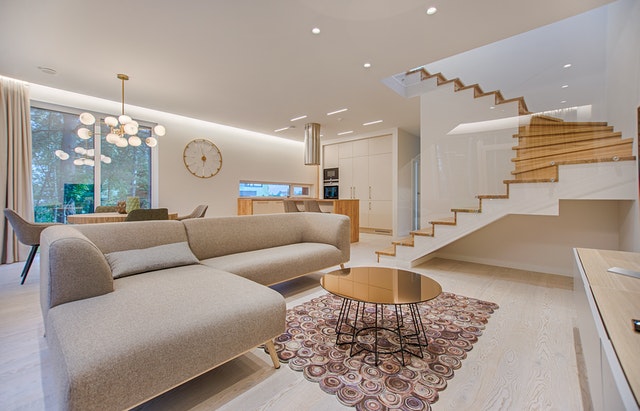Small Kitchen Ideas
Small kitchens have design needs that may be unlike their larger counterparts. Make the most of the space on hand to maximize the design.
Homeowners updating a galley kitchen, loft kitchen or other small kitchens, have different needs in both style and design. Maximizing the functionality of the space, while visually enlarging the room, can make even the smallest kitchens feel cozy, rather than cramped.
Kitchen Space Planning Guidelines
The NKBA offers multiple guidelines for kitchen space planning. Ideally, a kitchen will have what is known as a “work triangle”, or a set up that places the refrigerator, cooking area and sink in the shape of a triangle, with no more than 9’ between two areas, and no less than 4’.
Additionally, each work area needs to have a designated amount of landing area, or a stretch of counter designated for placing items as they leave or enter a work space. For instance, the cooking area should have 12” of landing area on one side, and 15” on the other. This means that mapping out the ideal kitchen design, will leave room for multiple cooks to move between stations, and having plenty of counter space between sections, such as the areas between a stove and a refrigerator.
Small kitchens, however, may have different needs. A galley kitchen, with one row of appliances and counter space, in unable to make up a work triangle. Likewise, a small kitchen may not be able to leave adequate landing room between appliances. This means that homeowners and kitchen designers need to get creative in mapping out the kitchen design.
Combine Working Areas
One way to help maximize the kitchen design in a galley kitchen, or other small kitchen design, is to try to combine work areas. To combine landing areas, an additional 12” should be added to the larger of the two landing areas. For example, a refrigerator needs 15” of landing area, a stove needs 12” and 15” and a sink needs 18” and 24”. Lining up the appliances so that the refrigerator lands next to the side of the stove with 12” of space, makes the space between the two areas 39”. Placing the sink to the other side of the stove, leaving 24” of space to one end, makes the area between the stove and the sink 45”.
If possible, move the sink into the corner of the run, and take the additional 24” from the next wall. This makes the total run of cabinetry along one wall 84”, plus the refrigerator. If the refrigerator can be moved to an adjacent wall as well, the work triangle begins to appear, and the work areas have plenty of room.
Smaller kitchens, however, do not always have this amount of space. In this case, consider using a wheeled island, which can be pushed into a corner when not in use. This brings additional work and landing areas into the equation, where and when needed, without sacrificing additional space.
Visually Open the Room
To make a location seem larger than it is, keep the lines clean and avoid visually busy areas. Use large format tiles on the kitchen floor, to minimize grout and create less of a grid effect. Lay the tiles on the diagonal, to draw the eye out to the corners of the room in narrow spaces, visually widening it.
Go the opposite effect on backsplashes, and use a mosaic tile of 5/8” – 3/4” along the counters. Most backsplashes are 18” in height; using a 6”, 3×6” or 4” tile will make the size of the backsplash, and therefore the counters more obvious by filling the space with countable tiles. Mosaics cover the entire area in one pattern, leaving the eye to skim their surface.
Choose kitchen colors in cooler tones. If using dark wood cabinets, choose burgundy cherries, or wenge, and stay away from warm, natural cherries and golden stains. Cool colors recede from the eye, making spaces look larger, while warm coolers contract, making spaces appear smaller.
Use granites that have large swirls and veins of color, to help draw the eye along the counters, creating movement and widening the space. Pull the colors for the backsplash and wall from the granite, to create a uniform look for the whole space.
Small kitchens need to remain as functional as possible. Try placing microwaves inside cabinets to save space, and choose the largest size appliances that can comfortably fit in the kitchen, without cramping the space.
Remember not to sacrifice style, just because a space is small. Big designs can still work in small spaces, so plan big, and transform a small space today.




